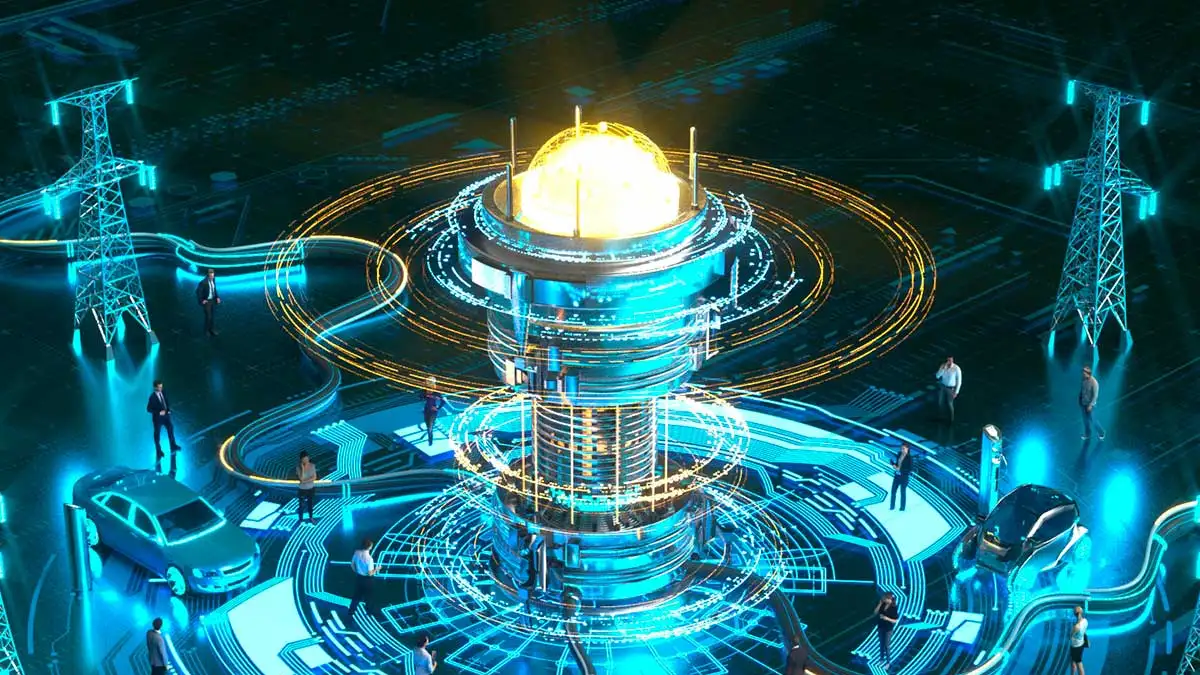Key Takeaways:
- Quantum phase transitions in superconductors present intriguing complexities, challenging conventional understanding.
- Tungsten ditelluride, when reduced to three atoms thick, exhibits remarkable superconducting properties at extremely low temperatures.
- The abrupt disappearance of quantum fluctuations at certain electron densities defies existing physics paradigms, demanding novel explanations.
- Researchers’ meticulous experimentation sheds light on the delicate balance between superconductivity and disruptive quantum effects.
- Unraveling the mysteries of superconducting quantum phase transitions offers exciting prospects for advancing scientific knowledge and understanding.
In the transition from ice to water, a metamorphosis occurs. The behavior, motion, and atomic arrangement undergo a transformation, indicative of a phase shift. Although the fundamental nature of the substance remains unchanged, its operational dynamics are distinctly altered.
Similar phenomena, albeit in the quantum domain, captivate researchers probing superconductors. Sanfeng Wu, immersed in the study of such transitions, expresses profound interest, stating, “The transformation of a superconducting phase into another is a captivating field of inquiry.” This curiosity has long fueled investigations into atomically thin, pristine, and singularly crystalline materials.
To deepen their comprehension, the research cohort chronicles their journey in a recent publication in the journal Nature Physics, where they explore the properties of tungsten ditelluride, whittled down to a mere three atoms thick. Subsequently, subjecting it to extreme cold, plunging temperatures to a staggering -459.58 F°.
Upon achieving frigid conditions, the team introduces additional electrons into the material, thereby inducing superconductivity. Tiancheng Song, the principal author, marvels at the minimal gate voltage required to effectuate this transition, deeming it a truly remarkable feat.
Yet, the discoveries do not cease there. Unexpectedly, at specific electron densities, a peculiar phenomenon unfolds—a development entirely unforeseen by the researchers.
In this endeavor, the team’s objective is to scrutinize quantum fluctuations, prevalent at the precipice between superconductive and non-superconductive states, which inevitably disrupt the former. While superconductivity embodies inherent organization, fluctuations represent its antithesis. The emergence of fluctuations signals the demise of superconductivity.
To observe these disruptive elements closely, one side of the material is subjected to heat, rendering it insulative rather than conductive. This transformation prompts the generation of quantum vortices—miniature eddies of magnetic fields—facilitating researchers’ analysis of fluctuations.
Throughout the experiment, the team maintains a steady electron density within the material. However, upon modifying these levels, an astonishing revelation unfolds: at a certain density threshold, the quantum fluctuations inexplicably vanish.
This perplexing observation defies conventional physics, leaving researchers baffled. Wu articulates the astonishment, remarking, “The abrupt cessation of fluctuations upon crossing the critical electron density threshold is utterly confounding.” The absence of a coherent explanation underscores the necessity for a paradigm shift in understanding superconducting quantum phase transitions.
In the face of such enigmatic phenomena, particle physicists find themselves confronted with an unprecedented conundrum. As Wu aptly summarizes, this scenario necessitates a fresh perspective and novel insights into the intricate domain of superconductivity.
The pursuit of these uncharted territories promises an exhilarating intellectual challenge for the research team.


